 |
|
|
mangrove
plants text index | photo
index
|
| coastal plants |
| Sea
teak Podocarpus polystachyus Family Podocarpaceae updated Jan 13 Where seen? These hardy pines with refreshingly bright green leaves are still found on the natural cliffs of Sentosa. But as suitable habitats are becoming increasingly rare, so too are the trees. It is believed that there are less than 50 wild specimens of these trees in Singapore. According to Hsuan Keng, the tree is considered a species native to Singapore and found in Labrador, Kranji and other parts of the island, usually near the sea or at the back of mangroves. It was also recorded growing in gardens. According to Giersen, it is endemic to Southeast Asia and mainly found on sandy beaches where it is found in groups at the high water mark, as well as on coastal cliff, swampy forests, and back mangroves. Inland, it is found on limestone hills. Its Malay name is 'Jati bukit' which means 'hillside teak'. Features: A shrub or small tree (1-20m tall). The trunk is sometimes fluted and sometimes has buttress roots. Leaves long, narrow and pointed (3-10cm) thick glossy, bright green. The Sea teak is a conifer. That is, it produces seeds but no flowers. Instead, it has reproductive structures called cones or strobili. Male plants produce clusters of 3-5 cream-coloured cones which shed whitish, powdery pollen. From Corners, the scientific name refers to 'many (poly) ears of corn (stachys)' which is what the male cones resemble. Female plants produce a highly modified cone. The seed is green when ripe and below it is a fleshy red swollen receptacle which is eaten by birds and bats. Human uses: According to Burkill, the timber is small but still used for house building, carts and various other uses. Indeed, the Malay name for the tree is Jati Laut (translating to Sea teak) as well as Setada or Sentada. Burkill notes that medicinal uses possibly ascribed to it include the use of the leaves as an alternative to treat rheumatism and painful joints. Status and threats: It is listed as 'Critically Endangered' in the Red List of threatened plants of Singapore. With the loss of our natural coastal habitats and mangroves, this once common plant is also becoming increasingly rare. Joseph Lai has recently recorded Sea teak at Sisters Island, Lazarus Island, Pulau Jong and Pulau Sarimbun. It is also found in abundance on Sentosa's natural cliffs at the Tanjung Rimau natural shore. According to the Red Data Book, it is also found at St. John's Island. On the mainland, it is only found in the Sungei Mandai area. But the tree is now widely planted in many of our coastal parks. |
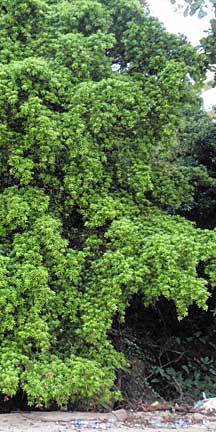 Growing wild on a natural cliff. Sentosa, Apr 09 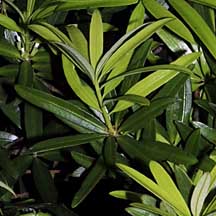 Sentosa, Apr 09 |
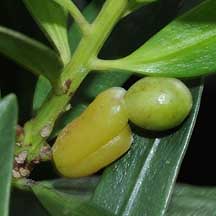 Green seed on top of swollen receptacle. Sentosa, Apr 09 |
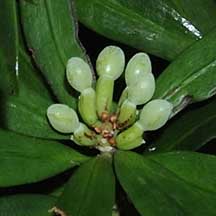 Female cones Sentosa, May 08 |
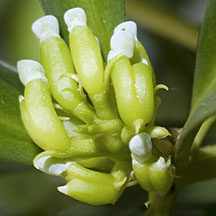 Young female cones Berlayar Creek, Jan 13 |
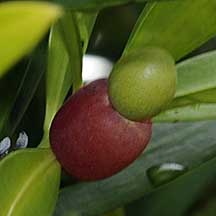 Swollen red receptacle attracts birds and bats. Labrador Park, Apr 09 |
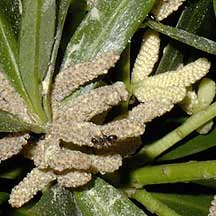 Male cones. Sentosa, Aug 07 |
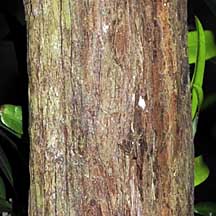 Sentosa, Apr 09 |
| Sea teak on Singapore shores |
| Photos of Sea teak for free download from wildsingapore flickr |
| Distribution in Singapore on this wildsingapore flickr map |
|
Links
References
|
|
|